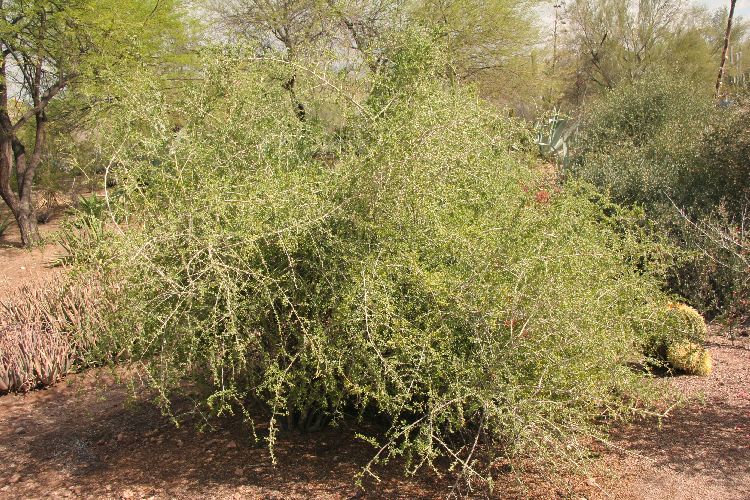
Lycium fremontii
Wolfberry
Mature size of 10 by 10 feet as given is atypical; plants are usually smaller. Grows with a thick array of arching, spreading, spiny branches—ideal habitat for birds and other wildlife. Red fruits follow the tiny flowers. Canopy coverage: 79 square feet.
[Read More]
Lysiloma watsonii var. thornberi
Feather Tree
Delicate ferny foliage is an attraction, along with a profuse spring and summer show of white to cream puffball flowers. Grow as a small tree or shrub. If damaged by frost it typically regrows rapidly into a shrubby form. Canopy coverage: 177 square feet.
[Read More]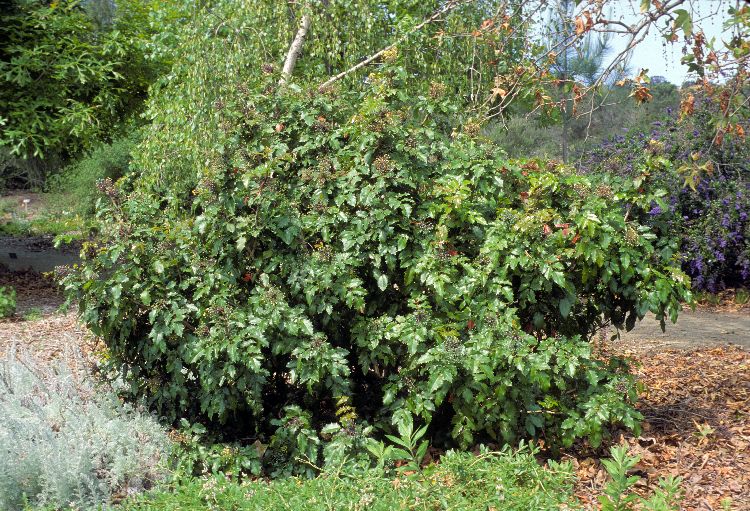
Mahonia aquifolium
Oregon Grape Holly
The leaves of Oregon Grape Holly change colors with the seasons. They are bronze when new, turning purple or bronzy hues in winter. Showy yellow spring flowers are followed by black berries in summer. Canopy coverage: 20 square feet.
[Read More]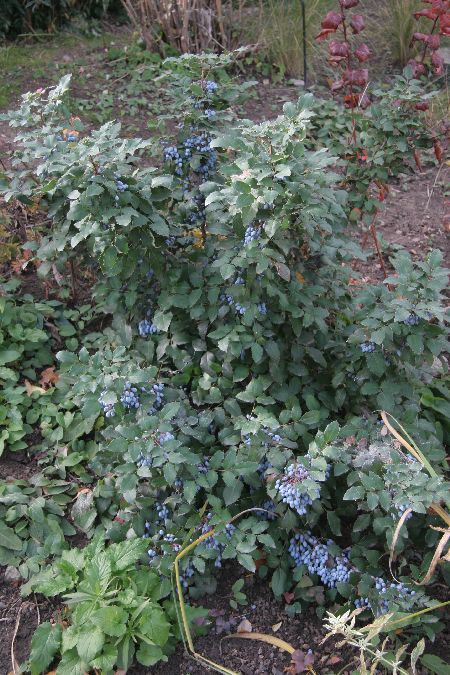
Mahonia aquifolium 'Compacta'
Compact Oregon Grape Holly
Compacta' is a smaller version of Oregon Grape Holly, ideal for small-space locations. Like its big brother, the leaves change colors with the seasons. They are bronze when new, turning purple or bronze in winter. Showy yellow spring flowers are followed by blue-black berries in summer. Canopy coverage: 7 square feet.
[Read More]Mahonia repens
Creeping Oregon Holly
This Mahonia can be grown as a small shrub or groundcover. Hollylike leaves are dark blue-green, taking on reddish to bronze shades in winter. Yellow flowers in clusters are followed by blue berries that look like grapes. Accepts sandy to heavy clay soils. Canopy coverage: 3 square feet.
[Read More]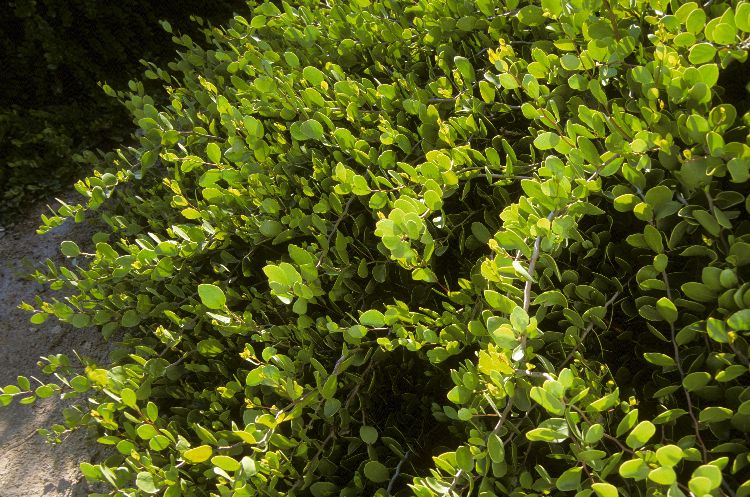
Maytenus phyllanthoides
Mangle Dulce
This large mounding shrub grows slowly but is worth the wait. Distinctive, oval, leathery leaves are bright green and contrast beautifully with its reddish branches. Best with some afternoon shade in hot summer regions. Canopy coverage: 79 square feet.
[Read More]Melaleuca linariifolia
Flaxleaf Paperbark
Flaxleaf Paperbark begins as a willowy juvenile (young) tree that may require staking. With time it takes on a sturdy, umbrellalike form. Most obvious feature is the interesting white bark on the trunk that peels in flakes. Small, delicate white flowers cover the tree in summer. Canopy coverage: 314 square feet.
[Read More]Mirabilis multiflora
Desert Four O'clock
An interesting shrubby perennial with profuse numbers of dramatic flowers. It is temporary; it dies back with winter cold, renewing growth the following spring. Note that flowers in photos will unfurl into hibiscuslike blooms. Canopy coverage: 13 square feet.
[Read More]Myrica californica
Pacific Wax Myrtle
The new genus name for Pacific Wax Myrtle is Morella, but it is still commonly sold as Myrica. Grown as a tree or shrub with graceful upright limbs. Accepts full sun along the coast; provide with afternoon shade and additional summer water in hot inland regions. Leaves to 4 inches long are fragrant. Berries that are loved by birds follow the inconspicuous spring flowers. Canopy coverage: 314 square feet.
[Read More]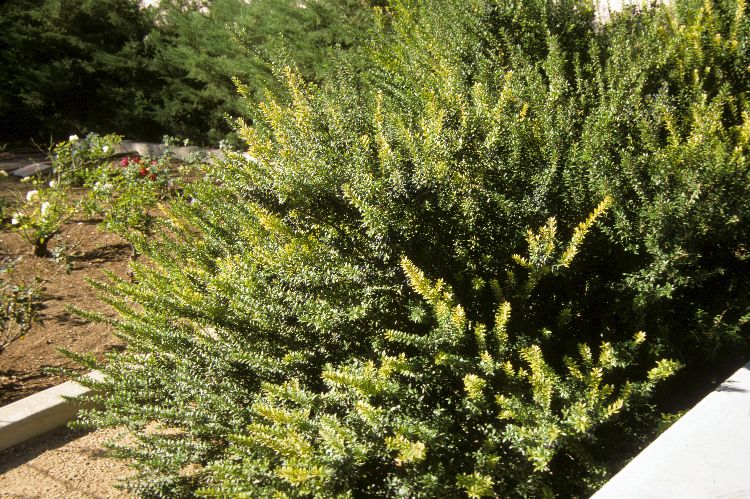
Myrtus communis
True Myrtle
Look for 'Compacta', Dwarf Myrtle, for a smaller scale planting. It grows to 4 feet high and as wide. 'Variegata' has bright yellow-green leaves. Canopy coverage: 79 square feet.
[Read More]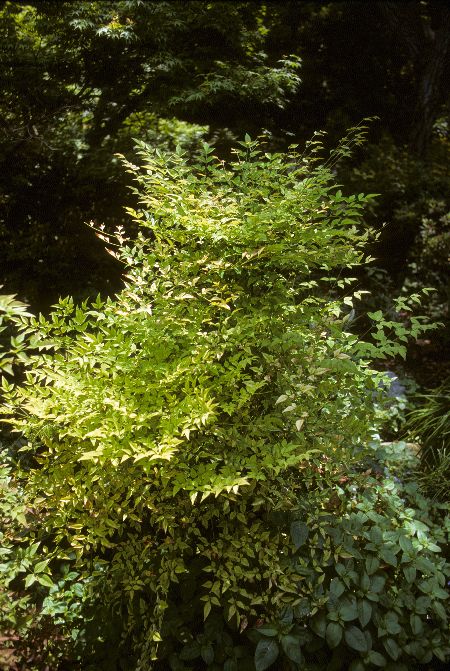
Nandina domestica
Heavenly Bamboo
Heavenly Bamboo looks much like bamboo but is unrelated. Avoid planting in afternoon sun—better with north or eastern exposure. Leaves often turn shades of red and orange in fall following exposure to sun and cold. Canopy coverage: 13 square feet.
[Read More]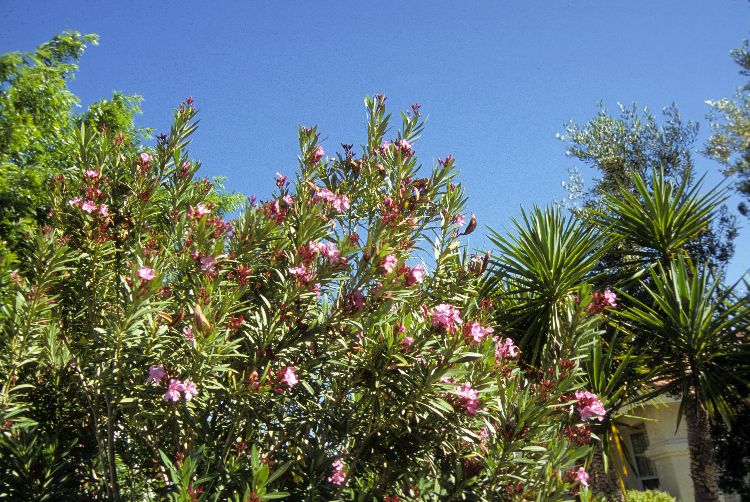
Nerium oleander
Oleander
One of the most versatile shrubs, a workhorse in the landscape, accepting of tough conditions. Be aware that all plant parts are poisonous. 'Petite Pink' is a dwarf selection, to just 4 feet high. It is slightly less hardy to cold. Canopy coverage: 79 square feet.
[Read More]Olea europaea 'Little Ollie'
Little Ollie Olive
This is a dwarf version of Olea europaea. (See Trees category.) It does not produce fruit. Canopy coverage: 28 square feet.
[Read More]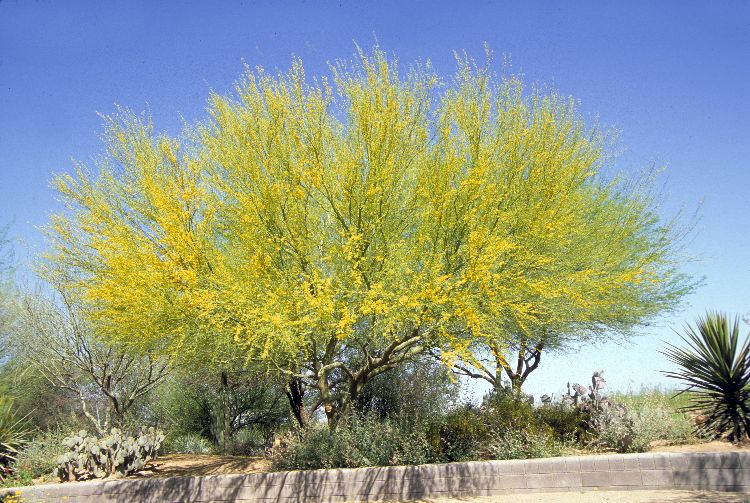
Parkinsonia microphylla
Foothills Palo Verde
Foothills Palo Verde is naturally more shrublike in form but it can be pruned to become a small tree with character. Canopy coverage: 177 square feet.
[Read More]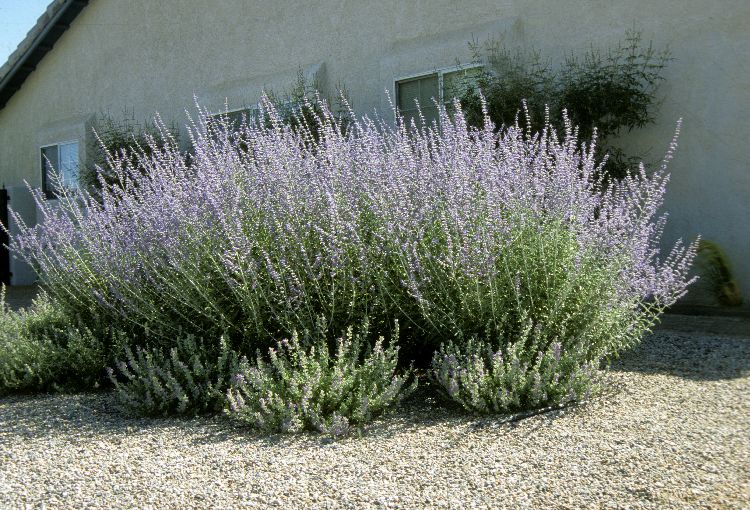
Perovskia atriplicifolia
Russian Sage
Russian Sage is a large, upright plant that can be used much like a deciduous shrub or large flowering perennial. A long bloomer that is easy to grow. Canopy coverage: 13 square feet.
[Read More]Philadelphus coronarius
Sweet Mock Orange
A primary attraction of Sweet Mock Orange is its fragrant flowers that remind one of orange blossoms. Plant grows in a fountainlike form with arching branches. Prune spent flowers to renew plant and improve appearance after flowering season. Canopy coverage: 79 square feet.
[Read More]Philadelphus lewisii
Wild Mock Orange
Wild Mock Orange grows as a rounded shrub in sun or shade. Prune only to remove broken or dead branches. Flowers are fragrant and remind one of orange blossoms, thus its name Mock Orange. Canopy coverage: 28 square feet.
[Read More]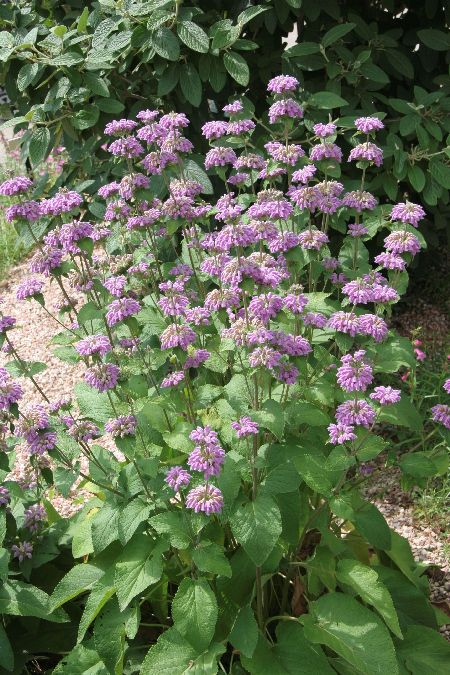
Phlomis cashmeriana
Himalayan Sage
Himalayan Sage is a large perennial that produces eye-catching spires of lavender-pink flowers. Leaves are fuzzy. Canopy coverage: 3 square feet.
[Read More]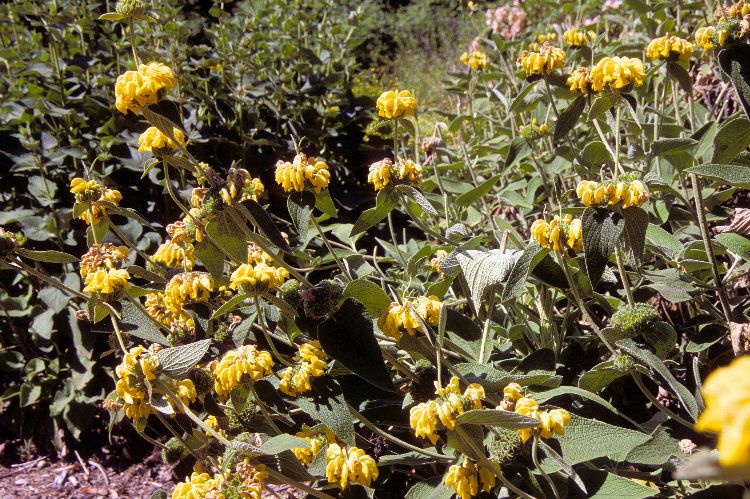
Phlomis fruticosa
Jerusalem Sage
Jerusalem Sage is shrublike in form, and blends well with other dry-climate plants. Accepts full sun in some regions but overall better with afternoon shade, particularly in hot summer climates. Foliage is aromatic when brushed. Flowers are borne in whorls of yellow along upper stems. Canopy coverage: 7 square feet.
[Read More]Phlomis russeliana
Sticky Jerusalem Sage
Sticky Jerusalem Sage grows as a clumping low shrub or groundcover with large, heart-shaped leaves. Flowers are borne on tall stems like other Phlomis species. Spreads by underground runners. Canopy coverage: 3 square feet.
[Read More]Phlox paniculata
Garden Phlox
Also known as Tall Garden Phlox and Summer Phlox, plants grow to 3 feet high. Flowers are small, just 1 inch across, but are borne in large, dome-shaped clusters. Mildew is a common problem; select resistant varieties to help curtail. Canopy coverage: 3 square feet.
[Read More]